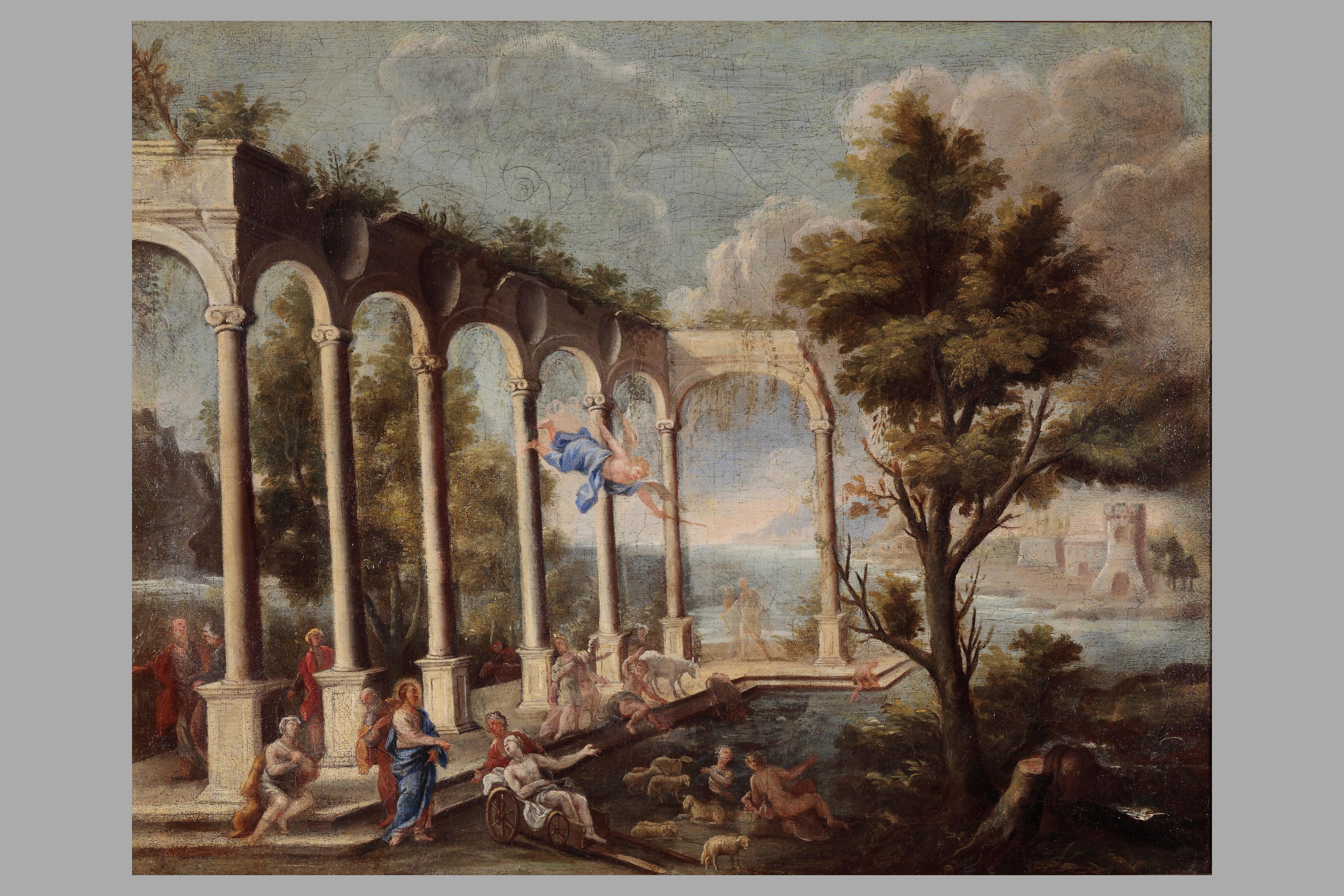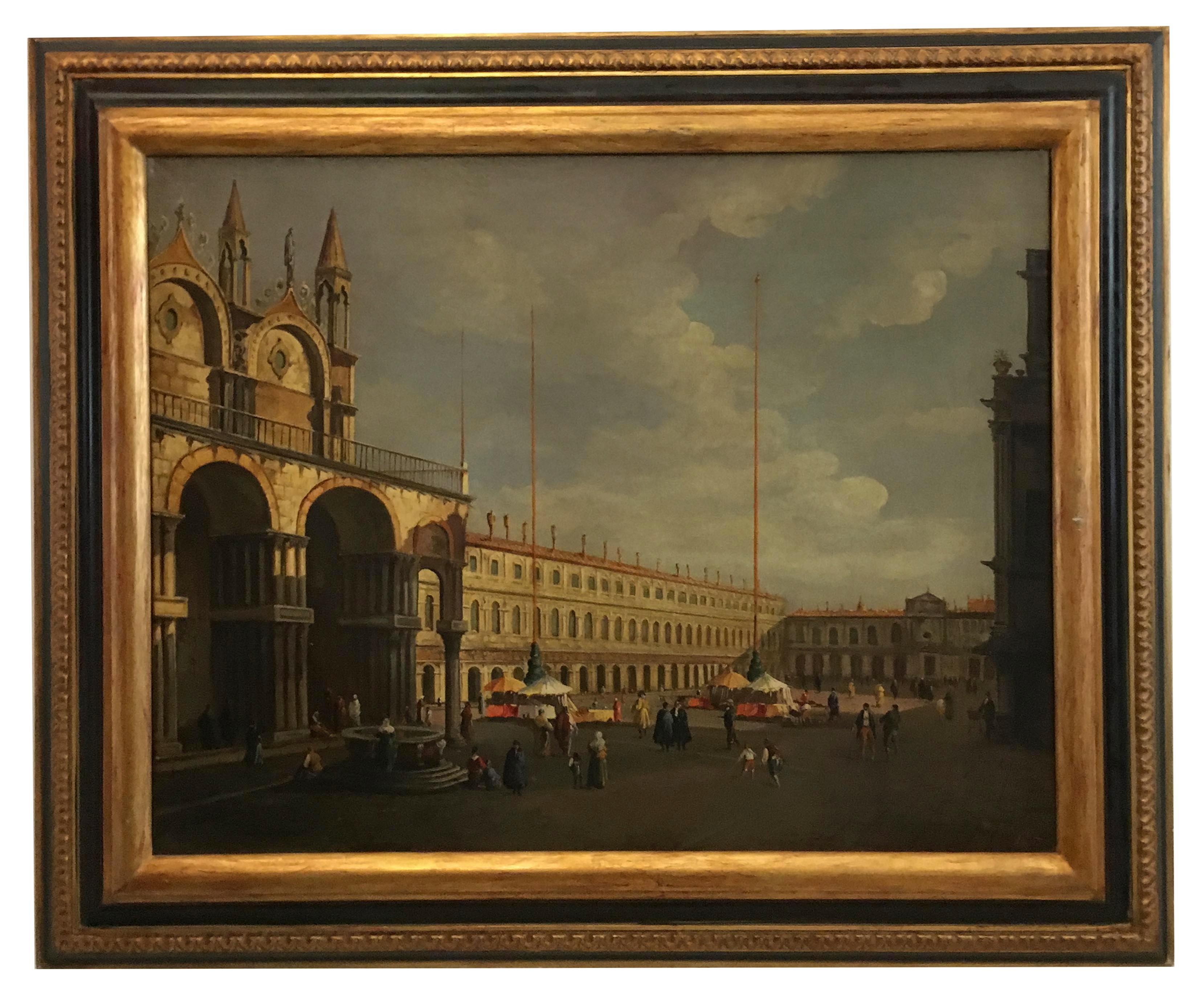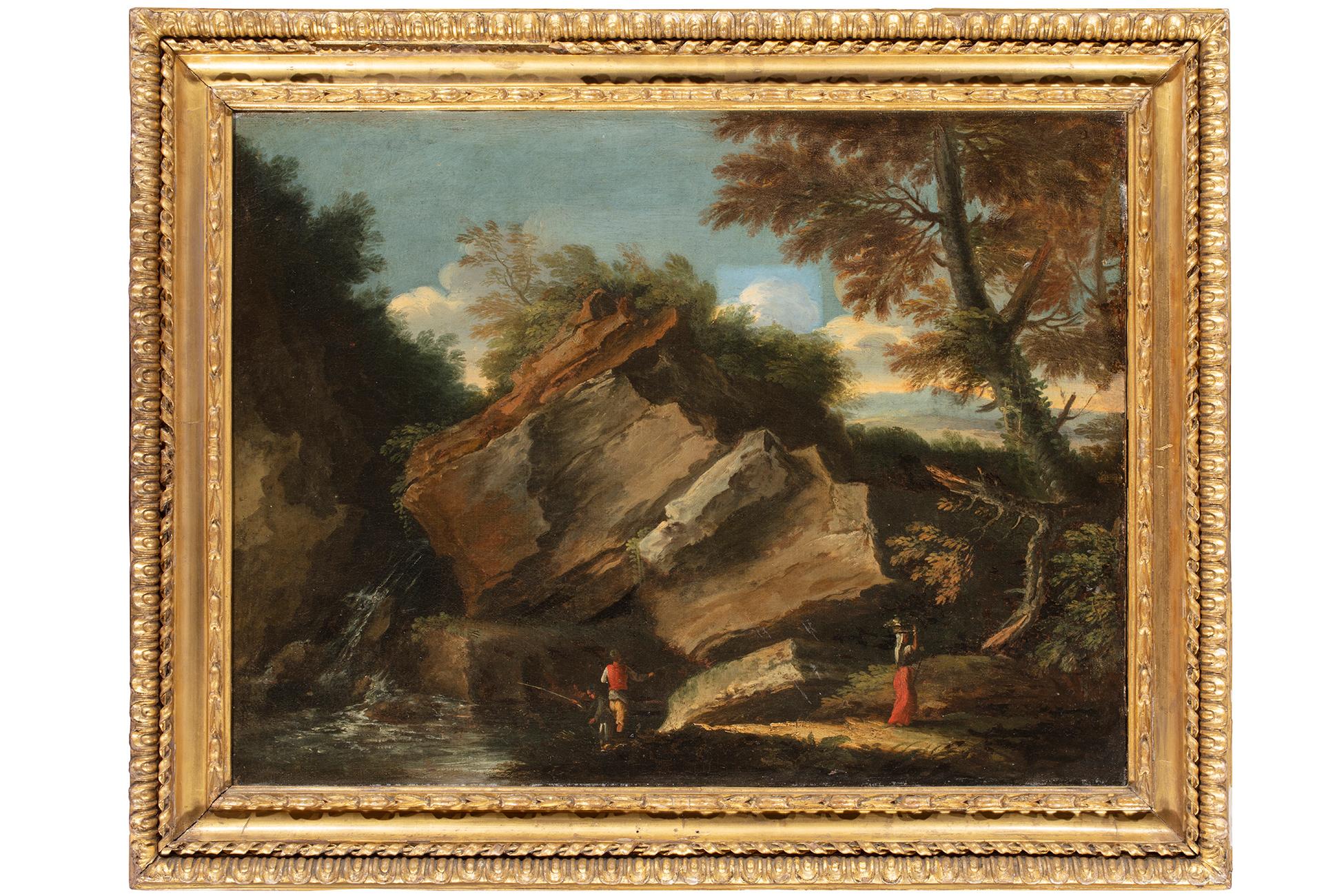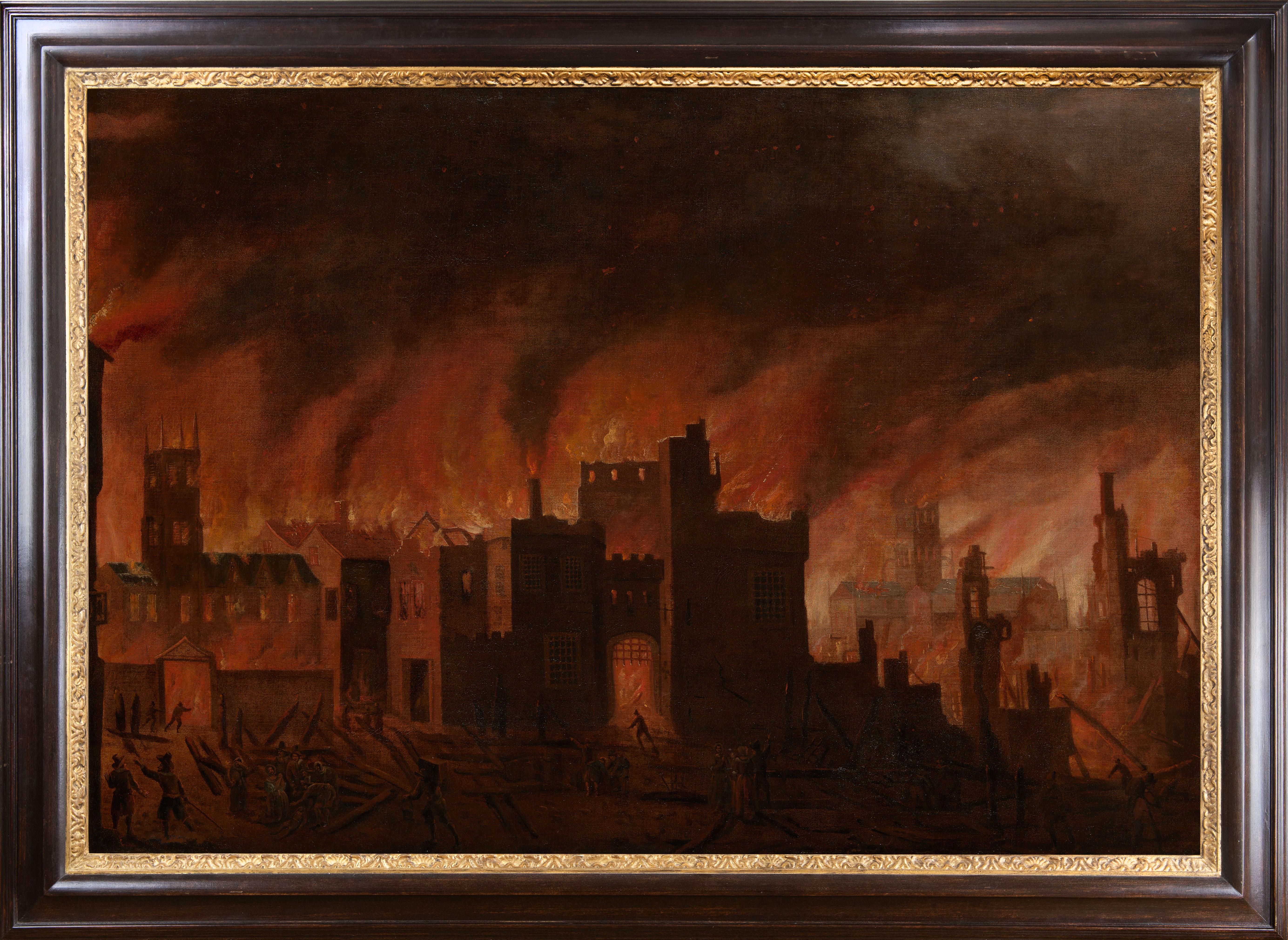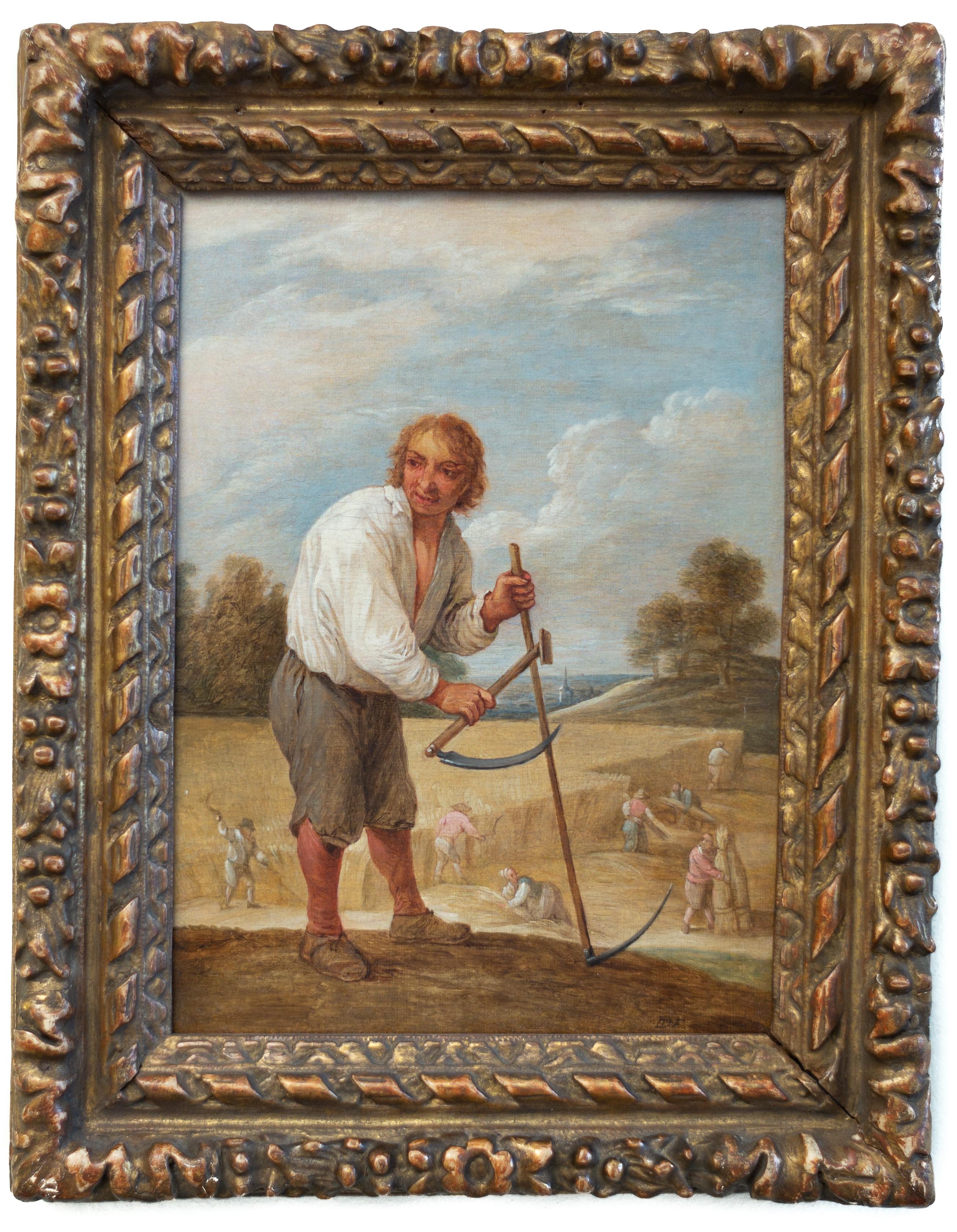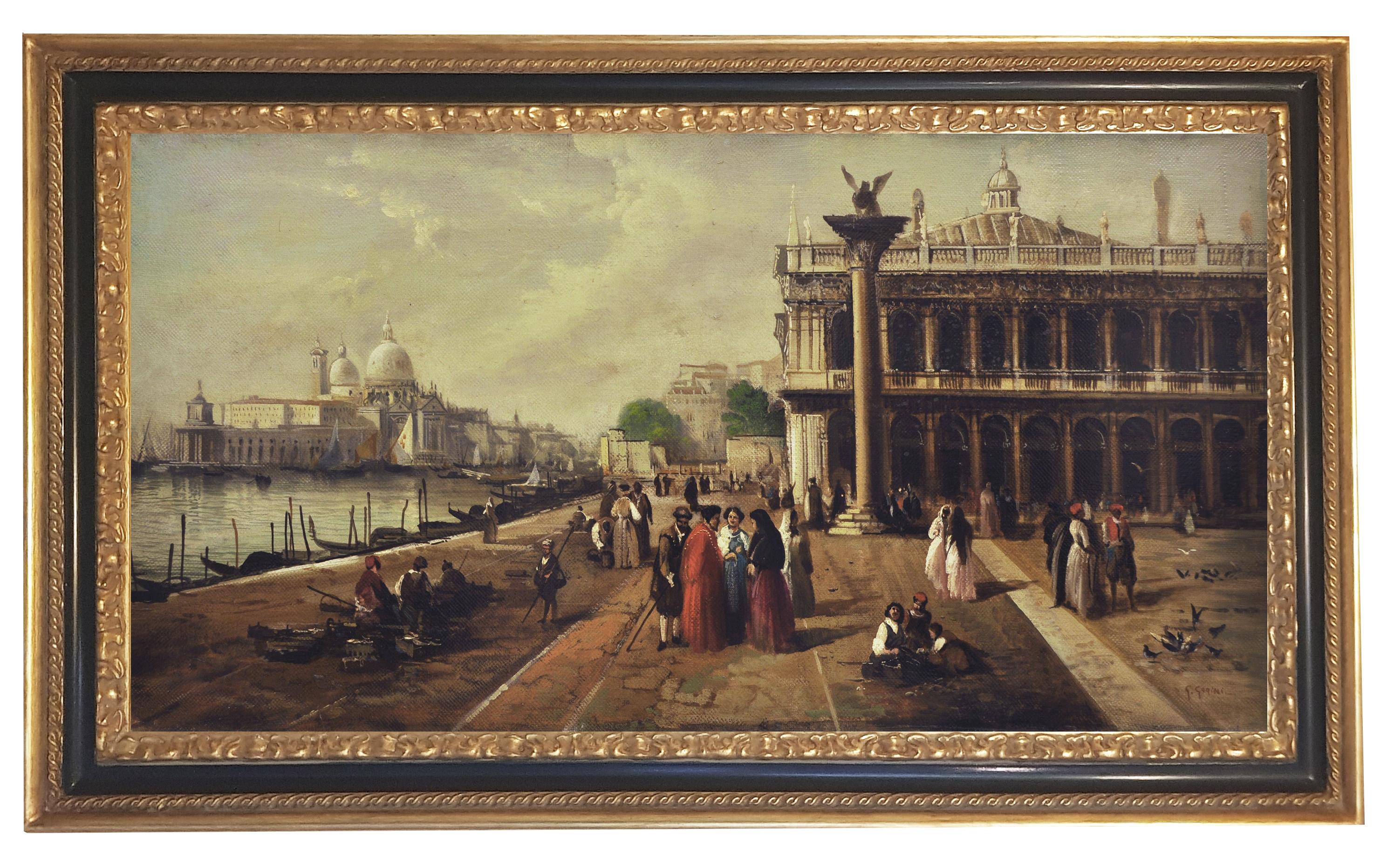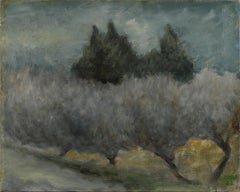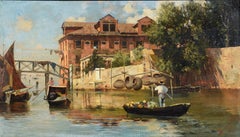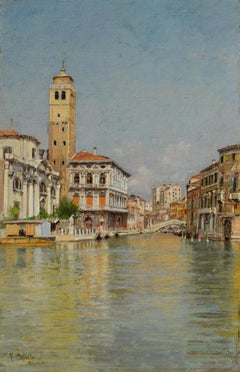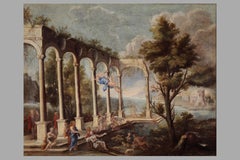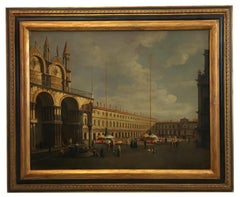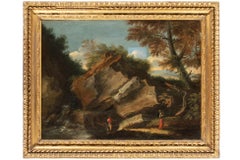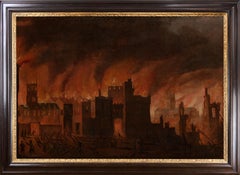Items Similar to View of Ponte Milvio in Rome
Want more images or videos?
Request additional images or videos from the seller
1 of 6
UnknownView of Ponte Milvio in Rome
About the Item
Northern painter active in Rome in the second half of the 17th century, View of Ponte Milvio
Oil painting on canvas 73 x 97 cm in coeval Roman Salvator Rosa frame.
- Dimensions:Height: 28.75 in (73 cm)Width: 34.65 in (88 cm)
- Medium:
- Movement & Style:
- Period:
- Condition:
- Gallery Location:Roma, IT
- Reference Number:1stDibs: LU1927214350082
About the Seller
5.0
Vetted Professional Seller
Every seller passes strict standards for authenticity and reliability
1stDibs seller since 2022
5 sales on 1stDibs
Typical response time: 3 hours
- ShippingRetrieving quote...Shipping from: Roma, Italy
- Return Policy
Authenticity Guarantee
In the unlikely event there’s an issue with an item’s authenticity, contact us within 1 year for a full refund. DetailsMoney-Back Guarantee
If your item is not as described, is damaged in transit, or does not arrive, contact us within 7 days for a full refund. Details24-Hour Cancellation
You have a 24-hour grace period in which to reconsider your purchase, with no questions asked.Vetted Professional Sellers
Our world-class sellers must adhere to strict standards for service and quality, maintaining the integrity of our listings.Price-Match Guarantee
If you find that a seller listed the same item for a lower price elsewhere, we’ll match it.Trusted Global Delivery
Our best-in-class carrier network provides specialized shipping options worldwide, including custom delivery.More From This Seller
View AllOlive trees in Tuscany
By Ottone Rosai
Located in Roma, RM
Ottone Rosai (Florence 1895 - Ivrea 1957), Olives in Tuscany (1942)
Oil painting on canvas 40 x 50 cm signed O Rosai and dated 1942 lower right; labels of Galleria d'Arte del Cavall...
Category
Mid-20th Century Other Art Style Landscape Paintings
Materials
Canvas, Oil
Price Upon Request
Venice
Located in Roma, RM
Bernardo Hay (Florence 1864 - Capri 1931), Venice (1882)
Oil painting on canvas 43 x 74 cm signed and dated 1882 lower right.
Category
Late 19th Century Other Art Style Landscape Paintings
Materials
Canvas, Oil
Umbrian countryside
Located in Roma, RM
Gaetano Vannicola (Offida 1859 - Grottammare 1923), Umbrian countryside
Oil on canvas 40 x 68 cm signed lower right.
Category
Late 19th Century Other Art Style Landscape Paintings
Materials
Canvas, Oil
Labia Palace, Grand Canal, Venice
By Vincenzo Caprile
Located in Roma, RM
Vincenzo Caprile (Naples 1856 - 1936), Labia Palace, Grand Canal, Venice
Oil painting on canvas by 36 x 24 cm signed and located Venice lower left.
Category
Late 19th Century Naturalistic Landscape Paintings
Materials
Canvas, Oil
The Grand Canal
By Antonio Reyna Manescau
Located in Roma, RM
Antonio Reyna (Coin 1859 - Rome 1937), The Grand Canal
Oil painting on canvas 18 x 30 cm signed and located Venice lower right.
Category
Late 19th Century Other Art Style Landscape Paintings
Materials
Canvas, Oil
Capri
By Giovanni Costa
Located in Roma, RM
Giovanni Costa (Rome 1826 - Marina di Pisa 1903), Capri
Oil on canvas 27 x 53 cm signed at bottom center.
Category
Late 19th Century Other Art Style Landscape Paintings
Materials
Canvas, Oil
$5,712
You May Also Like
18th Century By Vincenzo Re The Pool of Bethesda Oil on Canvas
Located in Milano, Lombardia
Vincenzo Re (Parma, Italy, 1695 - Naples, Italy, 1762)
Title: The Pool of Bethesda
Medium: Oil on canvas
Dimensions: without frame 50 x 62 cm - wi...
Category
18th Century Old Masters Landscape Paintings
Materials
Canvas, Oil
VENICE - In the Manner of Canaletto -Italian Landscape Oil on Canvas Painting
By Mario De Angeli
Located in Napoli, IT
Venice - Mario De Angeli - Italia 2006 - Oil on canvas cm. 70x90.
Mario De Angeli's canvas is an extraordinary work of Italian landscape painting. They are inspired by the landscap...
Category
Early 2000s Old Masters Landscape Paintings
Materials
Canvas, Oil
17th Century by Pietro Montanini Landscape Oil on Canvas
Located in Milano, Lombardia
PIETRO MONTANINI (Perugia, Italy, 1619 - 1689)
Title: Landscape
Medium: Oil on canvas
Dimensions: without frame 50 x 65 cm - with frame 64 x 79 cm
An...
Category
17th Century Old Masters Landscape Paintings
Materials
Canvas, Cotton Canvas, Oil
Early oil depicting the Great Fire of London
Located in London, GB
The Great Fire of London in September 1666 was one of the greatest disasters in the city’s history. The City, with its wooden houses crowded together in narrow streets, was a natural fire risk, and predictions that London would burn down became a shocking reality. The fire began in a bakery in Pudding Lane, an area near the Thames teeming with warehouses and shops full of flammable materials, such as timber, oil, coal, pitch and turpentine. Inevitably the fire spread rapidly from this area into the City. Our painting depicts the impact of the fire on those who were caught in it and creates a very dramatic impression of what the fire was like. Closer inspection reveals a scene of chaos and panic with people running out of the gates. It shows Cripplegate in the north of the City, with St Giles without Cripplegate to its left, in flames (on the site of the present day Barbican). The painting probably represents the fire on the night of Tuesday 4 September, when four-fifths of the City was burning at once, including St Paul's Cathedral. Old St Paul’s can be seen to the right of the canvas, the medieval church with its thick stone walls, was considered a place of safety, but the building was covered in wooden scaffolding as it was in the midst of being restored by the then little known architect, Christopher Wren and caught fire. Our painting seems to depict a specific moment on the Tuesday night when the lead on St Paul’s caught fire and, as the diarist John Evelyn described: ‘the stones of Paul’s flew like grenades, the melting lead running down the streets in a stream and the very pavements glowing with the firey redness, so as no horse, nor man, was able to tread on them.’
Although the loss of life was minimal, some accounts record only sixteen perished, the magnitude of the property loss was shocking – some four hundred and thirty acres, about eighty per cent of the City proper was destroyed, including over thirteen thousand houses, eighty-nine churches, and fifty-two Guild Halls. Thousands were homeless and financially ruined. The Great Fire, and the subsequent fire of 1676, which destroyed over six hundred houses south of the Thames, changed the appearance of London forever. The one constructive outcome of the Great Fire was that the plague, which had devastated the population of London since 1665, diminished greatly, due to the mass death of the plague-carrying rats in the blaze.
The fire was widely reported in eyewitness accounts, newspapers, letters and diaries. Samuel Pepys recorded climbing the steeple of Barking Church from which he viewed the destroyed City: ‘the saddest sight of desolation that I ever saw.’ There was an official enquiry into the causes of the fire, petitions to the King and Lord Mayor to rebuild, new legislation and building Acts. Naturally, the fire became a dramatic and extremely popular subject for painters and engravers. A group of works relatively closely related to the present picture have been traditionally ascribed to Jan Griffier...
Category
17th Century Old Masters Landscape Paintings
Materials
Oil, Canvas
Peasants in a Cornfield (Boer in het veld) by David Teniers the Younger
By David Teniers the Younger
Located in Stockholm, SE
Remembering the magic of everyday life moments in the art of David Teniers:
The art of David Teniers the Younger (1610–1690) coincided with the heyday of the Flemish Baroque and captured a great variety of motifs of his time. In this painting of a seemingly simple peasant scene lies keys to understanding both the imaginative mind of Teniers as well as why this time period produced some of the most iconic works in all of art history.
As indicated by the name, Teniers was more or less born into his profession. As the son of David Teniers the elder, himself a painter who studied under Rubens, the younger David received training in art from a very young age and had no less than three brothers who also became painters. Because of his father’s frequent financial failures that even at times saw him imprisoned, David the younger helped to rescue the family from ruin through painting copies of old masters. Essentially, the young Teniers was confronted with painting as both a passion and creative expression as well as a necessity during difficult times, an experience that would shape much of his capacity and sensitivity in his coming life.
Despite the hardships, the talent and determination of Teniers was recognized and quickly expanded his possibilities. He had already spent time in France and possibly also England when he was hired by his father’s former teacher Rubens to help with a prestigious commission with mythological paintings, now considered lost, for Philip IV the king Spain. In 1644–54 Teniers was appointed dean of the Antwerp Guild of Saint Luke, manifesting his esteemed position within the artistic community. A few years afterwards he took an important step when relocating to Brussels, where Teniers yet again found new career opportunities that would prove to be very successful.
As the keeper of the collections of Archduke Leopold Wilhelm, a role similar to what we now refer to as an art advisor, Teniers purchased hundreds of important artworks that manifested the prominent status of the Archduke’s collection while at the same time providing an unusual access to inspiration and knowledge for Teniers himself. Since he kept on painting during the same time, his creative scope must have seemed almost bewildering in the great variety of images and stories that he surrounded himself with.
Regardless of how glamorous and culturally stimulating the career of Teniers was, he was as open to the charm and existential importance of everyday life as he was to works of great masters and luxurious collectibles. In his impressive repertoire of genres with everything from exquisite royal portraits, interiors, landscapes and history paintings he always added something new and inventive, highlighting the possibilities of art and importance of an experimental and intuitive mind. It is difficult to single out one aspect or genre to summarize his legacy, since it lies much more in the broad virtuosity across many motifs, although he is particularly remembered for farm scenes and meticulously depicted interiors where other paintings and artworks are captured with an astonishing precision. However, the fact that he is still today one of the most known and celebrated names of the Dutch Golden Age is a proof to the magic of his work, which continues to spark dialogue and wonder in the contemporary viewer of his works.
The farm boy in the field in this painting, which likely dates to the mature part of his career, is a wonderful entry into the mind of Teniers. In the tightly cropped motif, we see him standing right in the middle of the busy harvest when men, women and everyone capable were sent out in the field to collect the crop that formed the very core of their diet and survival. In the background we see a fresh blue sky interspersed with skillfully painted clouds, some trees reaching their autumnal colours and in the far distance the glimpse of a small church and village. The presence of a church in a landscape, so typical of Dutch art, served both a symbolic and visual function as a representation of faith while at the same time defining scale and distance.
In the field, the work is in full action with the farmers spread out in various positions, all in the midst of hard and sweaty labour. While they are portrayed as having nothing else than the work on their mind, our farm boy seems to have his attention directed elsewhere. Standing there with his white, half open shirt, flowy curls and strong, sturdy body; his gaze is directed away, out of the picture and the scythes in his hands. He looks almost smirking, expressed with tremendous subtlety in the slight smile of his lips and big eyes, being just in the middle of losing focus on the work. What is it that steals his attention? What has he seen, or realized, or felt – to break him free of the arduous task of harvesting, if but for a moment?
Here starts the wondering and the questions that are the hallmark of a great piece of art. Instead of explicitly locking in the motif in overly clear symbolism Teniers has chosen an open ended, subtle yet striking moment for us to consider. While it of course can be related to numerous other farm scene depictions of this time, and clever usages of gazes and real-life scenes to underscore various moral or symbolic meanings, the painting can be much more of a contemplation than an explanation or illustration. The ordinary nature and understated yet emotionally textured composition of the motif gives greater space for our own reactions and thoughts. Has he seen a pretty farm girl just passing by? Is he fed up with the farm life, joyously dreaming away for a minute, imagining another future? Or is he simply in need of distraction, looking away and ready for anything that can steal his attention?
One quality that never seem to have escaped Teniers was that of curiosity. During all of his career he constantly investigated, expanded and experimented with not only the style and technique of painting, but with the vision of art itself. Being credited with more or less introducing farm motifs for a broader audience not only tells us of his ability to understand the demand for different motifs, but the sensitivity to transform seemingly ordinary parts of life into deep aesthetic experiences, far beyond their expected reach. The farm boy in this painting is, of course, exactly that. But with the help of one smirk the entire picture is charged with a different energy, awakening many contrasts and relationships between the calm landscape, the hard work and his own breach of effectivity, holding sharp scythes while thinking or seeing something else.
It is no wonder Teniers chose to work with farm scenes as a way of investigating these intricate and delicate plays on expectations and surprises, clarity and ambivalence. It invites us to an appreciation of human everyday life that connects us with the people of 17th century...
Category
Late 17th Century Old Masters Landscape Paintings
Materials
Canvas, Oil
VENICE -In the Manner of Canaletto- Oil On Canvas Italian Landscape Painting
By Giancarlo Gorini
Located in Napoli, IT
Venice - Giancarlo Gorini Italia 2002 - Oil on canvas cm.50x100
Gold leaf gilded wooden frameavailable on request
Giancarlo Gorini's canvas is an extraordinary work of Italian lan...
Category
Early 2000s Old Masters Landscape Paintings
Materials
Canvas, Oil
Recently Viewed
View AllMore Ways To Browse
Del Ponte
Veduta Di Roma
Veduta Del Ponte
Charles Rogers
Charleston Silver
Etienne Robert
Leonard John Fuller
Neo Classical Painting Landscape
Paintings Of Bluebonnets
Phillip Horse
Port Breton
Signed Jamey Stillings
Taos Pueblo
Thousand Islands Oil
Used Diving Board
Vintage Bee Painting
19th Century Painting Norfolk
Alfred Harris Painting
